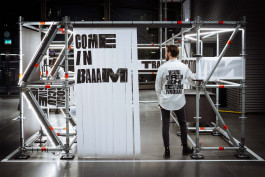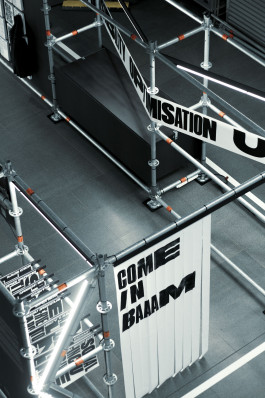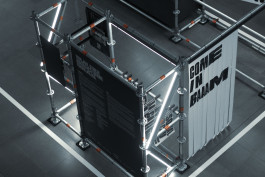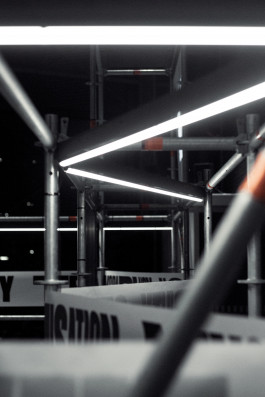






Visual Stream
Architecture Panorama 2019
INTRO
HSD University of Applied Sciences - Düsseldorf presents in cooperation with VITRA and ETH Zurich an exhibition and performative stage installation at the BAU Munich 2019.
This Open Workshop at the Visual Stream Exhibition involves all visitors such as architects, industry partners, fabricators, students and other stakeholders at the construction trade fair. It opens an complex Architecture Panorama to the recipients.
Pertinent questions dealing with the “architecture of the future” open up new contexts in various cluster topics to communicate in strategic and disruptive way. Complementary and polarizing approaches join and coordinate the different contexts and invite the visitors to face new realities.
WHY
The ability to work in dynamic groups and forms has become increasingly essential for the development of any knowledge economy–related company. With the amplified influence of evolving technologies – artificial intelligence (AI) and deep learning – on working routines and the architectural design of working environments, not only do work spaces seem increasingly dated, but also their ability to adapt to future arrangements and uncertainties appears rather limited.
We always value a pioneering spirit to explore and innovate – just like many architects, builders, developers and users actually do. The current condition opens up a multitude of freedoms to pioneer. The format of the Architecture Panorama helps all actors become pioneers in their respective fields. To achieve this, the Architecture Panorama raises awareness of specifics and challenges related to the knowledge economy and provides clues to innovative approaches towards increasingly dynamic working routines and their respective impacts on the built environment.
WHAT
Our projected Architecture -Panorama envisions possible scenarios and visually engages architects, as well as generally interested members from the building industries, in a discourse on appealing workspaces which encourage dynamic working routines.
An intriguing design and three-dimensional installation of an -Architecture Panorama, will provide direct, comprehensive and realistic impressions of actual challenges in workplace routines and examples of future-oriented workplace architecture.
Panoramic paintings became very popular in the mid-19th century, representing landscapes, topographic views and historical events. Audiences, immersed in a winding 360° panoramic image, were thrilled by the impression and by becoming part of an illustrated environment – distant in time and location. A prominent example can be found in the Bourbaki Panorama in Lucerne, Switzerland, created by Edouard Castres in 1881.
Charles and Ray Eames presented another form of panorama by creating an intense sensory environment using a multiscreen technique. More than 2,200 still and moving images were selected to depict ‘a typical work day’ in the life of the United States in nine minutes. It is called Glimpses of the USA and premiered in Moscow in 1959. For the film, all images were combined into seven separate film reels and projected simultaneously through seven interlocked projectors onto seven 20- by 30-foot screens suspended within a vast golden geodesic dome (250 feet in diameter). Their leitmotiv: ‘Visual models for matters of practical concern where linear description isn’t enough’.
Rather than painting a comprehensive picture of past work-related landscapes, the Architectural Panorama elicits among observers reactions such as delight and curiosity, especially the interest in stepping out of their own working and imaginary routines to embark on a journey to envision intriguing working scenarios and their respective spaces located in the future.
HOW
The installation of the Open Workshop at the Visual Stream exhibition is framed in a spatial break of various materials, both floating and static, with typographic and pictorial elements.
Touchpoints like a thematic archive, filmic contexts, various infographics and theme worlds invite visitors to discover and grasp the vastness of the content.
The staging is based on a visual panorama. Working through its three-dimensional the installation visualizes aesthetics and creates an overview scenario.
Within all directions, viewers can anticipate impressions and content to get the impression of a holistic, complete density.